Welcome to Ceramic Review
Ceramic Review is the magazine for contemporary and historical ceramics, ceramic art and pottery.
Ceramic Review Issue 334
July/August 2025
Ceramic Review is the magazine for contemporary and historical ceramics, ceramic art and pottery.
July/August 2025
Ranti Bam’s sculptural vessels push terracotta to its limits. She spoke to CR’s Annie Le Santo about her devotion to making and the powerful potential of clay.
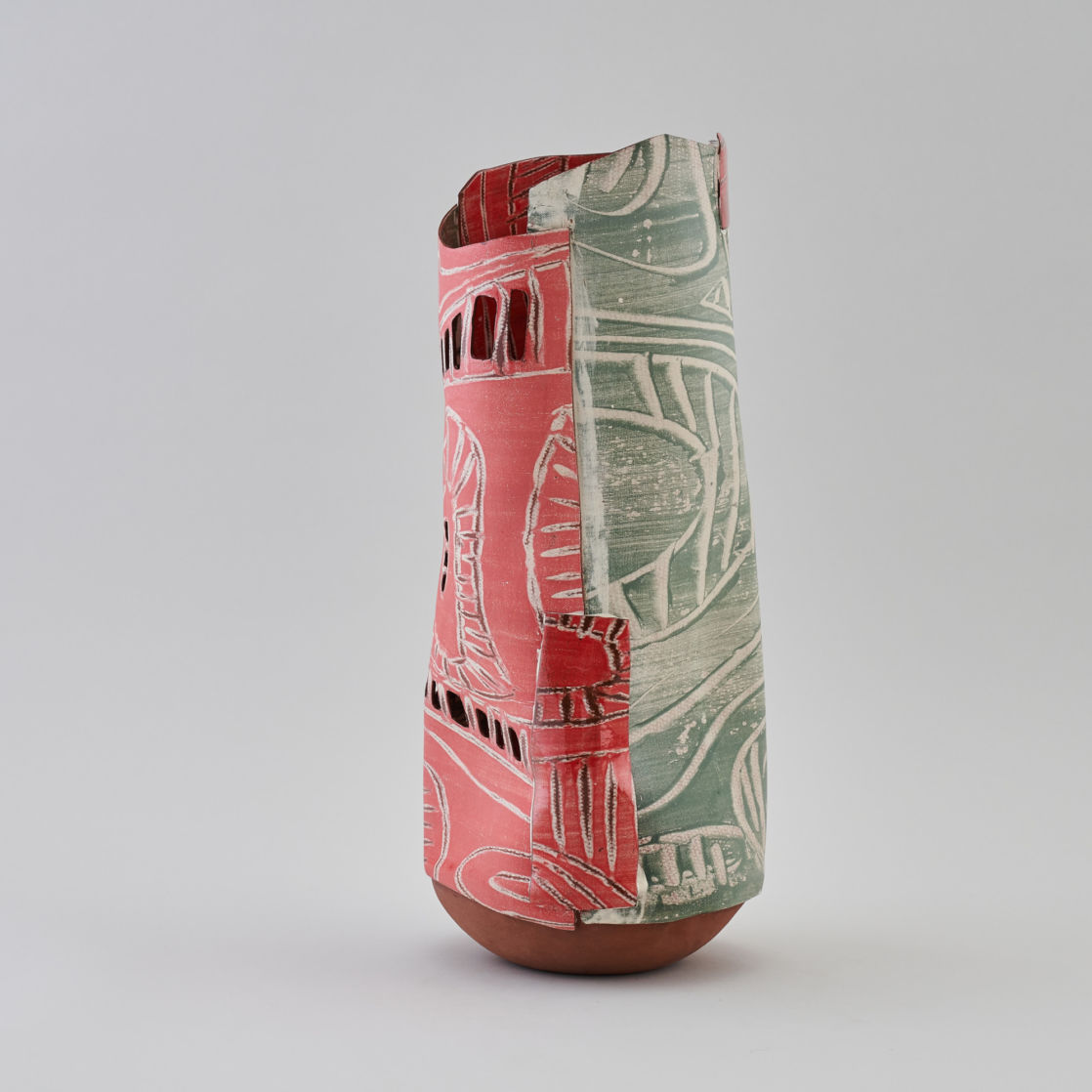
Milio, 2020, Terracotta, 43 x 17cm by Ranti Bam
All judgement is suspended in the studio of Ranti Bam. The torsos of her terracotta vessels are born from a place of joyous spirit, fearless optimism and free from expectation. So, when Bam arrived in Paris for the Cité Internationale des Arts residency programme at the beginning of March this year, her relaxed response to the events that followed is unsurprising. Just a few weeks after her arrival, as the coronavirus swept through Europe, France closed its borders. Come midsummer her stay has been long extended.
You might assume such uncertainty would do away with any creative momentum, but speaking to Bam, it is clear that the Montmartre gardens and studios have become fondly familiar. A global pandemic isn’t going to discourage her from doing what she went there to do. ‘It’s been a very nice place to be confined,’ she says. ‘I’d like to stay until I can actualise my project and work with the local community.’
Born in Lagos, Nigeria, Bam moved to North London when she was six years old. The assumed route for members of her family was into law, healthcare or engineering, but Bam isn’t one to stroll down well-trodden paths. Her openness to veer and venture is in part what has led to the success of her art, and she knew from a young age that
she enjoyed being creative. Despite the expectation of a more ‘respectable career’, Bam’s parents were supportive of her alternative choice.
‘My mother was a nurse but she was always crafting; embellishing her clothes, shoes and handbags or baking cakes,’ Bam recalls. After discovering she had an affinity for clay at boarding school, she chose to study BA Design at university. ‘I always knew I wanted to make things and I thought a design course was the most plausible way to do so,’ she says, ‘but I didn’t enjoy it. It was static and I needed immediacy.’
AWAKENING TO CLAY
It wasn’t until 2005, when Bam visited Africa Remix at the Hayward Gallery, an exhibition featuring the work of over 70 artists from across the continent, that she was introduced to a broader spectrum of what ‘making things’ could be. ‘It was like an opening of my third-eye,’ she explains. ‘For the first time I was seeing contemporary work made by African artists.’
It’s about saying to the clay “show me what you can do! Where can we go together?”
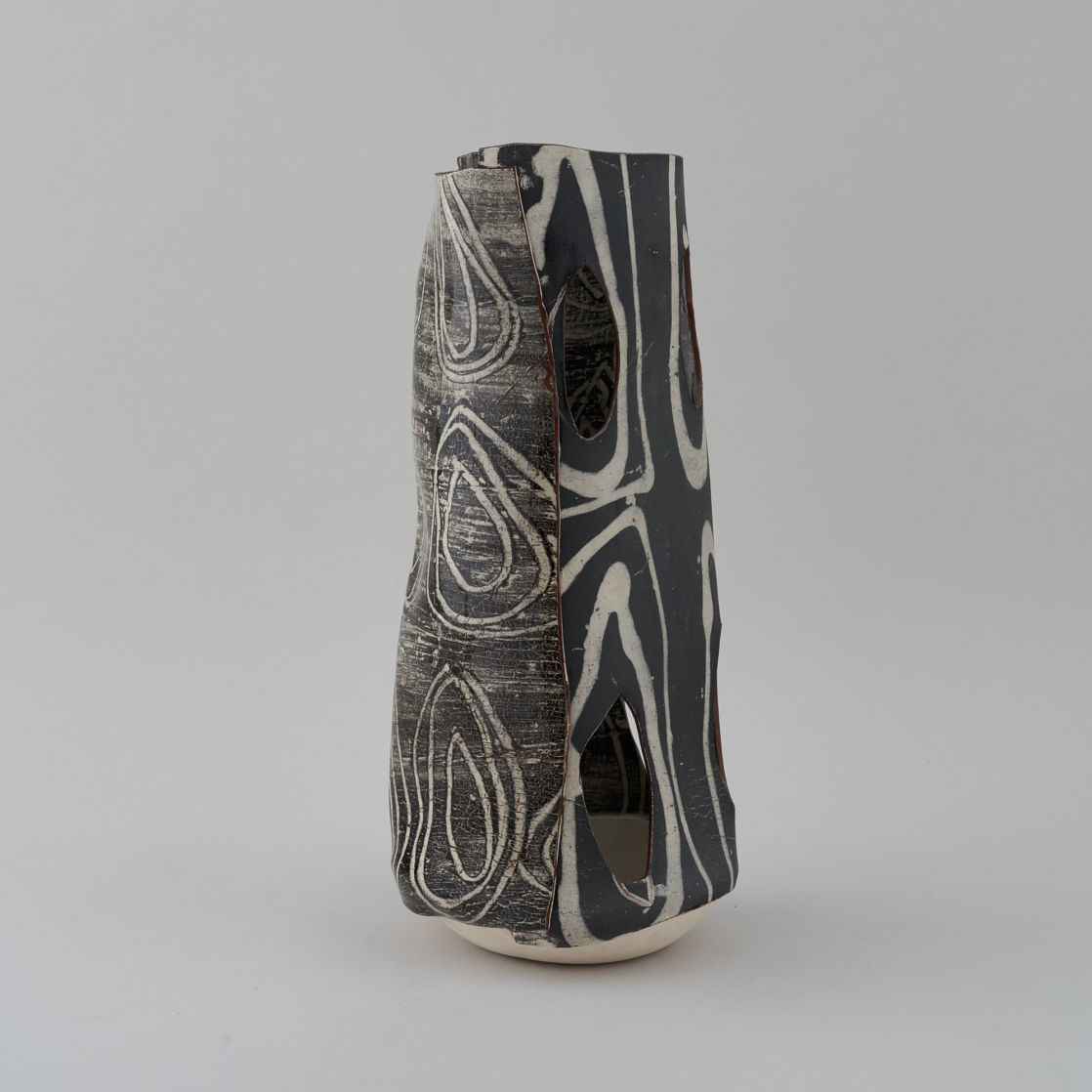
Lisi, 2019 Terracotta 38 x 16cm by Ranti Bam
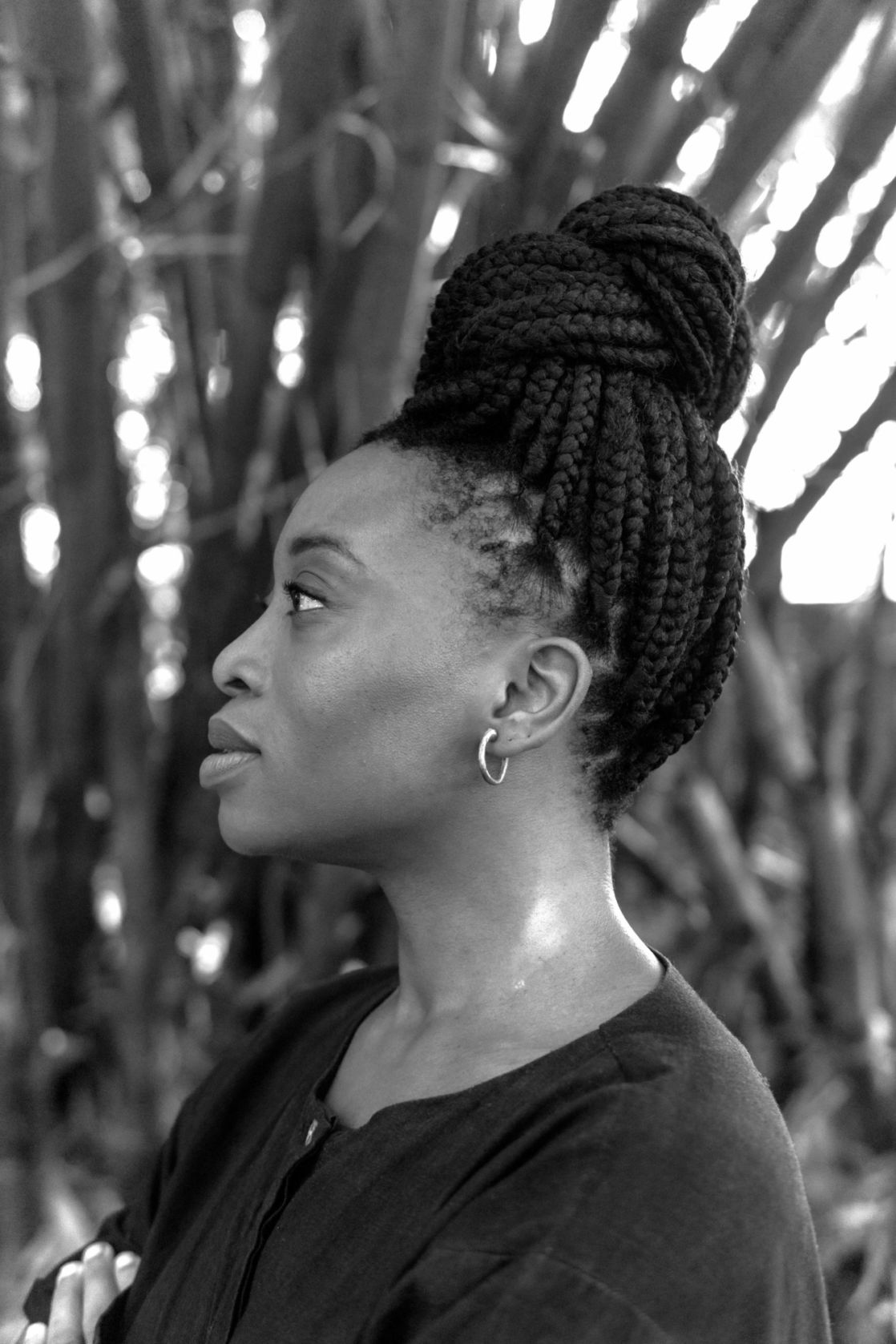
Ranti Bam
With newfound perspective, Bam undertook an MA Research by Project at The CASS, London. Her thesis was intertwined with her interest in philosophy, particularly an Eastern belief that humans and nature are one. During this time, she used clay to conceptually investigate the idea that we are inseparable from our environment, producing porcelain objects to examine the ways people relate to their surroundings.
Fascinated by etymology, the study of words, Bam recognised early on that she creates in order to communicate. ‘We speak to encompass our experiences into a tangible thing, to share. My work contains metaphors that I can show to others,’ she explains. She has carried this approach throughout her career, finding joy in observing visitors gather and talk around her vessels at fairs ‘as though they were a hearth’. ‘I always want people to connect with my pieces in a haptic way,’ she says, ‘Buddhists bow to each other in recognition of the god in one another. In this same way when I hand someone a piece, it is in recognition of a trust in them beyond (the handling of) the object.’
NURTURING PROCESS
Elevated by her postgraduate experience, Bam enrolled on the Ceramics course at City Lit, London. Initially thrown by the technicalities that come with working with ceramics in a less conceptual way, she found relief when tasked to produce an ‘abstract vessel’. Constructed by collaging slabs together to build an organic form, the thin walls of Bam’s vessels are punctured and cut into, which garnered warnings from tutors that they wouldn’t survive the kiln. ‘It’s about saying to the clay, “show me what you can do! Where can we go together?”’ she describes. ‘It’s important to me to be able to work freely, quickly and just let things flow.’ Daringly, she fires terracotta high past 1100°C, but by pushing it out of its comfort zone, she nurtures its rich qualities.
Mono-printed and painted with a considered use of slips and stains, the pieces are left largely unglazed, giving the illusion of hung cloth when viewed in person. ‘I work very intuitively,’ she explains. ‘I go into the studio intending to use a particular colour or feeling inspired by a poem I’ve read and I just let the clay do what it wants.’
CURATIVE POWERS
In a gallery setting, Bam’s vessels stand tall, radiating a warmth and containing a strength that defies their fragile construction. At a time when ceramics was still in the process of making its big break into contemporary art, Pascale Revert, the director of 50 Golborne (a gallery specialising in African talent) took a gamble. She invited Bam to exhibit her ceramics at Collect 2017 and later at the 154 Contemporary African Art Fair. Resulting sales convinced sceptical curators and Bam’s work has since returned to Collect a further three years in a row. It’s also found a permanent home in the collections of the V&A, the Contemporary Art Society and the Brooklyn Museum. Yet while these material successes have exceeded Bam’s expectations, she speaks most passionately about the socially engaged aspects of her practice. With an impressive record of delivering numerous workshops and artist residencies, she has taken her love of clay across borders to Zimbabwe, Italy, Kenya, Nigeria, and now France.
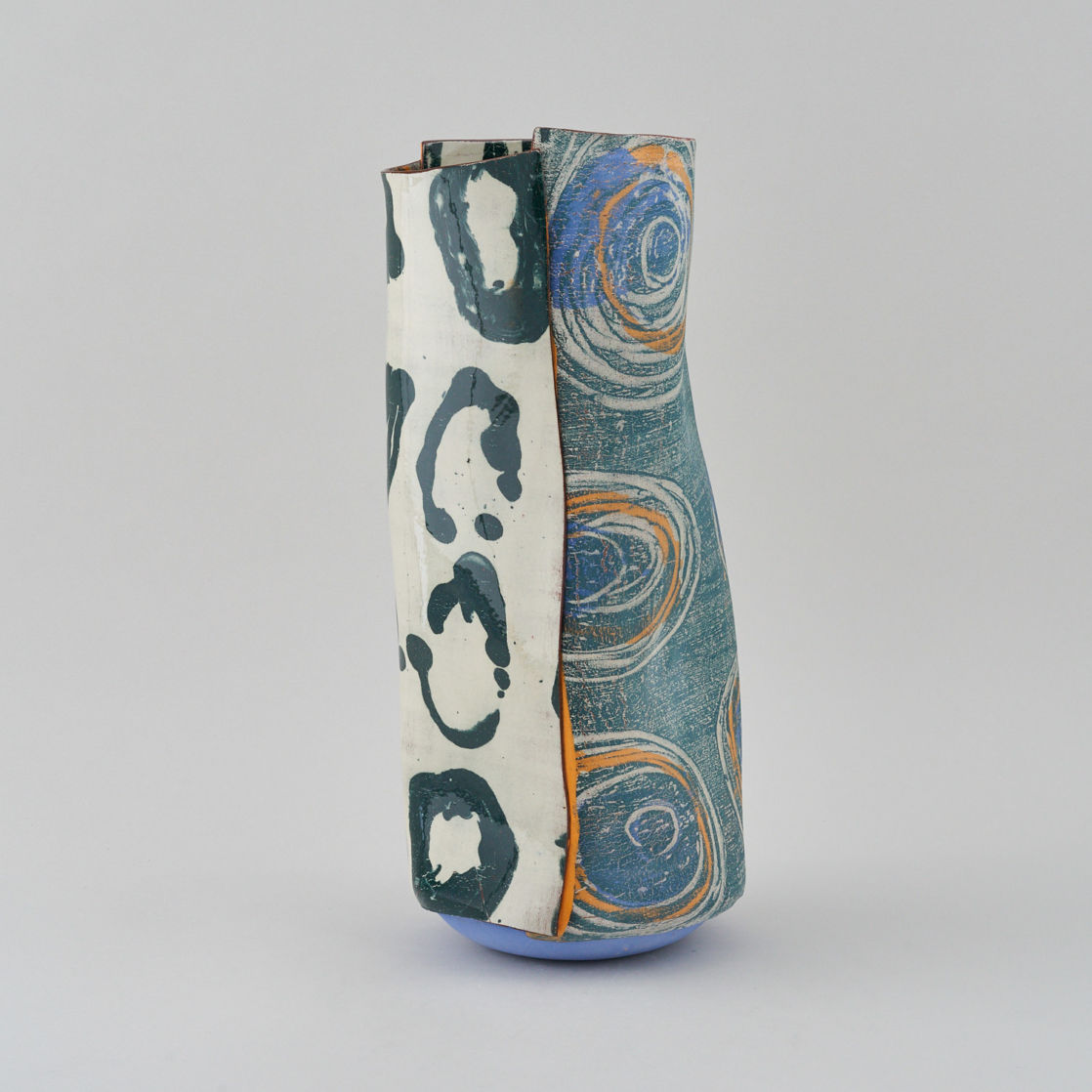
Ohuno, 2019, Terracotta 40 x 16cm by Ranti Bam
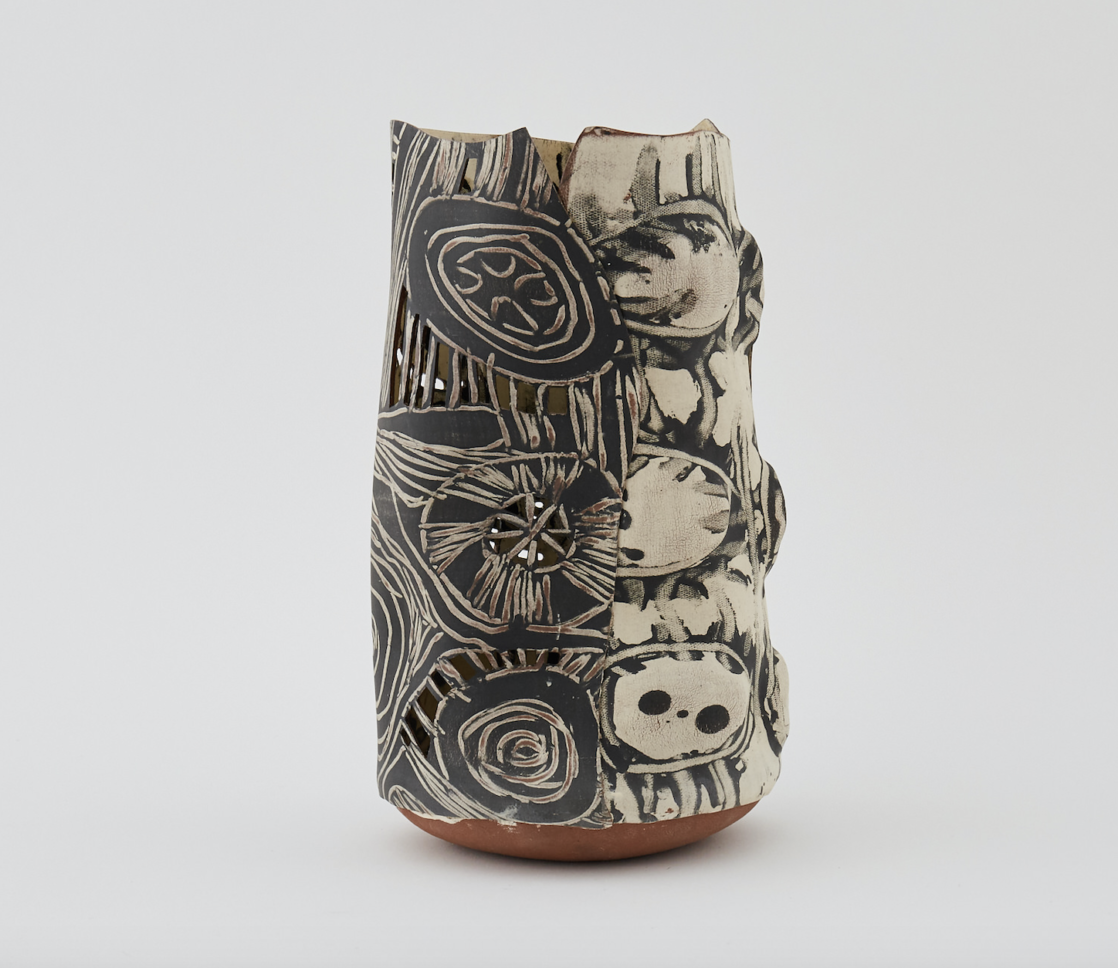
Romos, 2018. Terracotta, 31 x 16cm by Ranti Bam
Participants of Bam’s interactive sessions have ranged from the members of disenfranchised communities to over 200 feminist activists. ‘In Nigeria, a young man came to hug me after a session and said how the experience had made him feel closer to his father (who was a sculptor) in a way he never had. That was very powerful,’ she describes. ‘Clay is the primordial body: it is a material that can be curative and has great narrative powers.’
With Rock, Paper, Scissors, the project for her residency in Paris, she is returning to a conceptual approach, hoping to harness and express these qualities further. ‘While I am still excited to explore the three-dimensional form of the vessel, which allows me to investigate notions of the body and spirituality,’ Bam explains, ‘I am also expanding my practice with more storytelling, embracing other materials and going big!’
Throughout Bam’s journey she did not hesitate to do other jobs in order to support her art and travels. If it meant protecting her creativity from external pressures, she had no issue with it. Her studio is a ‘sacred’ space where the objects she creates unfold into their own being. ‘I remember the American mythologist Joseph Campbell talked about “following your bliss,” she explains.‘I am very happy that I have found my material in which to express myself. For me, clay is a metaphysical thing. It’s a gift.’
For more information visit rantibam.com